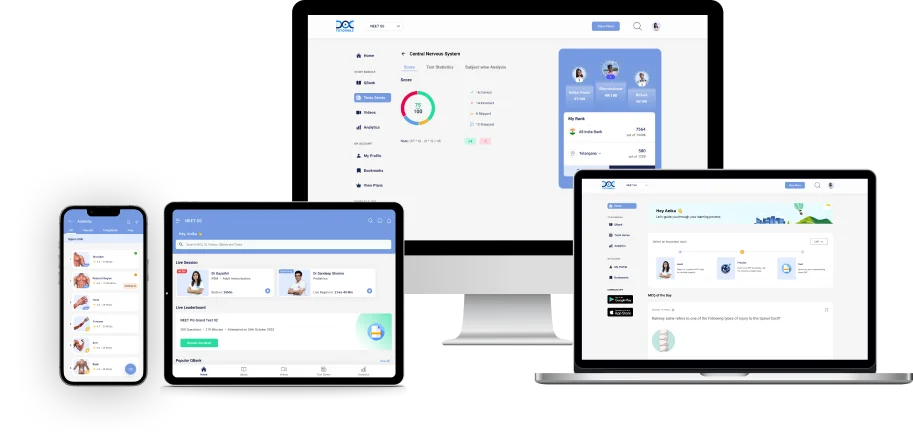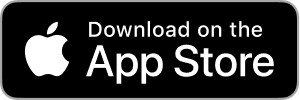What Things are Required in the First Year of Your MBBS?
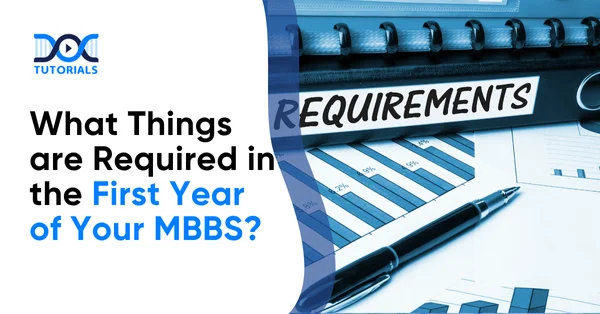
The first year of MBBS is a whirlwind of excitement, confusion, and discovery. When you enter medical college, you are not only entering a new academic stage but also starting a path to becoming a doctor.
To join the MBBS program in India, students must pass the NEET-UG entrance exam, which determines the allocation of all MBBS seats based on NEET scores. In this article, we will guide you through everything you need for your first-year MBBS, including academic supplies, laboratory equipment, lifestyle necessities, and digital tools.
This guide will help you stay on track, be confident, and be prepared, whether you are packing for college or shopping online. Keep reading for a detailed insight.
An Overview of the Eligibility for MBBS
The eligibility criteria include completion of 10+2 (or equivalent) with Physics, Chemistry, Biology, PCB, and English, and minimum marks. For example, the general-category students must have a minimum of 50% in PCB aggregate (40% in the case of OBC/SC/ST, 45% in the case of PwD).
The age of the candidates should not be older than 17 on December 31 of the year of admission (the age limit is unlimited according to recent rules). Overseas Citizens of India (OCI) and NRIs may also make applications, but in the same NEET-based process.
- Important: MBBS counselling can only be done by NEET-qualified candidates. The NEET result would be followed by the registration of students on the MCC/state counselling portal, the locking of college preferences, and the receipt of seat allotments.
- Domicile and Quotas: There are also seats reserved (15% All-India Quota, 85% state quota, and institutional quotas), and a valid state domicile certificate is required by those who are claiming seats reserved by states (e.g., a valid state domicile certificate).
Eligibility Snapshot: The table below summarises core admission requirements as per NTA (NEET) and NMC guidelines:
| Criterion | Requirement |
| Entrance Exam | NEET-UG qualification (compulsory in all medical colleges). |
| Age | A minimum of 17 years as of December 31 of the year of admission. |
| Education | 10+2 or equivalent with PCB and English (≥50% for General; 40% OBC/SC/ST; 45% PwD). |
| Nationality | Indian citizen (OCI/NRI on AIQ/deemed/ univ. seats only). |
| Document Verification | NEET admit card and score, marksheets of Class 10/12, ID, photographs, etc., are accepted by original. |
| Counseling Process | Enrol on the MCC or State portal; attend rounds; submit reports to the assigned college with records. |
Every applicant is expected to carry the required documents to the designated college for admission verification (see table above).
Important documents are the NEET-UG admit card and mark sheet, 10th and 12th mark sheets, a valid photo ID (Aadhaar, passport, etc.), passport-size photographs, and any category certificates. Being unable to generate originals can invalidate your seat allotment.
What is the MBBS Program Structure and First-Year Curriculum?
MBBS is a 5 1⁄2 years long (4 1⁄2 years of study and 1 year of mandatory internship) degree. The most recent timetable provided by NMC (of the 2022-23 batch) indicates that the first professional year has a duration of 13 months (e.g., Nov 2022 – Dec 2023) and includes three core subjects.
Phase I (First Year) of MBBS in India is based on the basic medical sciences:
| Subject | Core Topics and Activities |
| Anatomy | Gross human dissection, Surface anatomy, Histology slides, Embryology, and Neuroanatomy (brain/spinal cord). |
| Physiology | Function of major systems (CVS, Resp, Neuro, GI, Renal, Endocrine), Homeostasis. Lab experiments (e.g. spirometry, ECG, reflex tests). |
| Biochemistry | Chemistry of proteins, carbohydrates, lipids, nucleic acids; enzymology; metabolism (glycolysis, Krebs cycle, etc); molecular biology. Biochem lab exercises (e.g. blood glucose, pH, colourimetric assays). |
| Others | Foundation Course modules (BLS, computer basics, English), AETCOM (ethics/communication skills), basic pathology/microbiology introductions. |
These classes are delivered in the form of lectures, pragmatic/laboratory classes, and small-group integrated modules. To illustrate this, the first-year schedule of a college is dedicated to hundreds of hours on each course: Anatomy (675 hours total), Physiology (495 hours), and Biochemistry (250 hours).
Besides that, the competency-based curriculum developed at NMC incorporates the elements of:
- Foundation Course (Induction Month): A 1-month course at the beginning of the first year on orientation to life in medical college, introduction to medical ethics, communication, computer literacy and even basic life support.
- Attitude, Ethics & Communication (AETCOM): Longitudinal modules integrated with every subject to develop professional values, ethics, and communication skills.
- Early Clinical Exposure (ECE): Visits to hospital wards or clinics during the introduction of the basic concepts with patient care at an early stage.
- Family/Community Adoption Program: Individual students (or groups) are adopted by a rural/urban family or community where they study public health and conduct outreach over the course of different years.
- Sports and Electives: Sports, yoga, electives and extracurriculars are also part of NMC guidelines, which provide dedicated hours. As an example, the training of Yoga and community outreach is explicitly stated to be maintained in every batch.
How are 1st Year MBBS Subjects Aligned with the CBME Curriculum?
All the topics are directly related to the CBME curriculum of the National Medical Commission (NMC). As an illustration, the integrated modules could be used to give an example of anaemia in relation to these subjects (Anatomy + Physiology + Biochem) to support learning.
The students should adjust to a busy program of lectures, dissections, museum classes and laboratories. Anatomy in a single standard schedule requires 220 lecture hours, 40 hours of self-directed learning (SDL), and 422 hours of group tutorials/discussions.
The Physiology and Biochemistry have also made an organised schedule of lectures, SDL and small-group discussions. In such a way, a freshman spends approximately 1,700 or more hours in classes and laboratories in a year.
A well-stocked library and essential textbooks are crucial for first-year MBBS. The core recommended textbooks in anatomy are Grey’s Anatomy and Anatomy by BD Chaurasia to cover gross anatomy; Textbook of Medical Physiology by Guyton and Hall to cover physiological concepts; Textbook of Biochemistry by D.M. Vasudevan or Physiology by Harper.
Additional revision is provided by supplementary review books and atlases (e.g. Netter’s Atlas in anatomy, and “Mrukash” in physiology). Determining the right books at an early age will create a good foundation. In addition to textbooks, colleges usually offer e-learning tools, lecture notes, and journals, which students should become familiar with during their first days of study.
What are the Documentation and Formalities Requirements?
Upon seat allotment, students must report to the college within the given timeframe, bringing all original documents. Mandatory paperwork for MBBS admission typically includes:
- NEET-UG Scorecard & Admit Card: Originals of both are compulsory for admission verification.
- Class X & XII Certificates/Mark Sheets: Certificates and comprehensive marksheets in 10th and 12th boards (or equivalent).
- Identity Proof: Government photo identification like Aadhaar card, passport, voter ID, etc.
- Passport-size Photographs: A few recent photographs for college records and ID cards.
- Category Certificates (if applicable): Caste (SC/ST/OBC/EWS) or PwD certificate for claiming reservations.
- Domicile Certificate: Conditional on a state-quota seat and the need to establish local eligibility.
- Transfer & Migration Certificates: In certain universities, one is required to have a transfer (of a college) or migration certificate during college admission.
- Physical Fitness Certificate: It is often necessary to have a medical fitness form signed by a doctor (exercise caution: any contagious diseases or serious health problems can be examined).
Any failure to provide any of the necessary documents may result in the cancellation of the seat. When making copies of any documents, you should always retain at least two copies.
Colleges will collect these, keep them on file, and issue provisional admission letters once all verifications are complete.
What are the Academic Requirements?
In the first year of MBBS, the National Medical Commission enforces strict academic rules. Key points:
- Attendance: An admission criterion of 75% attendance in theory classes and 8% attendance in practicals/labs is required of a student before they are allowed to take exams.
Failure to do so implies that the student would not be able to present even the supplementary examination; they would have to redo the missing part along with the new batch. Colleges can arrange additional remedial courses to address any shortages, though it is the student’s duty to eventually attend them.
- Promotion to Second Year: A first-year student would not be allowed to take second-year courses until he has passed all first-year courses. After the annual examination, the results are announced, and only students who succeed in all subjects will be allowed to participate in the 2nd professional training.
- Examinations: The first year is usually preceded by one annual university exam (almost invariably two papers per subject) and by internal sessional/term exams. In case a student fails a subject, they might be allowed a supplementary (re-exam), which is about one month after the original exam.
The additional results are then announced within approximately 15 days. Notably, NMC has prescribed that additional MBBS batches can not be offered; any failures would have to be vacated in the next exam slot with the same batch.
- Passing Criteria: NMC regulations demand that to pass a subject, the overall mark of 50% in theory and practical, with at least 40% marks in theory and practical. To illustrate, given that Anatomy has 100 marks, a student should obtain a minimum of 40/100 in theory and have a total of ≥50/100. University exams do not have any grace marks.
- Number of Attempts: A student is allowed up to 4 years (4 attempts) to clear the first year (i.e. the four annual cycles of examinations with supplementary exams). If a student fails a subject after four attempts, the NMC rules state that the student will not be allowed to continue with the MBBS course.
It is important to keep track of internal assessments (practicals, term tests, viva) because, in many colleges, they are a prerequisite to university examinations. Besides this, cotton attendance (attendance in skills courses) and submission of logbooks or projects (on a family study project, etc.) on time may be requested according to the college policy.
What are the Study Material and Supplies Requirements?
MCQ books, library journals, and online resources complement the core textbooks. Lecture notes or guidebooks of many colleges are aligned with the particular syllabus and should be looked at carefully.
Students tend to create peer study groups or revise online (although NMC does not encourage excessive reliance on coaching). It is a good idea to keep track of NMC-suggested materials (via such resources as eGyankosh or the publications of NMC itself).
Aside from books, equipment, and supplies are part of “things to have” for Year 1, such as:
- Stethoscope: Many colleges issue a stethoscope, but if not, students should acquire a basic single-head or double-head stethoscope. It’s useful from the first week onward (for auscultation demos in Physiology and later in clinics).
- Lab Coat/White Coat: You will spend a lot of time in labs and dissection halls. A clean white coat (often knee-length) is generally required by the end of the first year (some colleges from day one). You’ll also need masks, gloves, and a plastic apron for dissection and biohazard safety.
- Study Aids: Colored pens/highlighters for notes and diagrams, index cards for quick revision of terms/diagrams, and blank notebooks. Many students keep separate notebooks for each subject’s practical lab work.
- Digital Tools: A laptop or tablet is helpful for accessing e-books, lecture slides, and educational videos. The Foundation Course often includes basic computer training. Maintain digital folders for PDF notes and assignments.
Internet access will be needed for registrations (NMC logbook uploads, forms) and sometimes for online lectures or quiz apps.
- Stationery and Supplies: A reliable backpack, geometry set (for drawing anatomical diagrams), transparencies and markers if you do overhead slide presentations, and a diary/planner to track the heavy workload.
Aside from academics, medical students also receive certain protective gear. For example, during anatomy dissection, supplies like a scalpel set, preservation fluids, and first-aid kits may be provided by the college.
However, personal preparedness is key: keep hand sanitisers, any required prescription medications, and a small medical kit (painkillers, band-aids) handy, as first-year schedules can be physically exhausting.
Things to Know about MBBS 1st Year Campus Life and Policies
When starting MBBS, students should be aware of campus and regulatory norms:
- Orientation & Induction: Colleges hold an orientation/orientation week (part of the Foundation Course). Students learn about campus, anti-ragging rules, library cards, and meet faculty.
- Anti-Ragging Measures: Ragging is strictly prohibited by NMC regulations. Each college has an Anti-Ragging Committee (often including the Principal and senior faculty) to address any issues. Freshmen typically take an anti-ragging oath and are housed in separate hostels or areas initially to minimise harassment.
- Dress Code & Professionalism: A clean appearance is expected. While scrubs aren’t needed until clinical years, maintaining a neat uniform (often shirt/trousers or salwar-kameez) during classes is standard.
Punctuality and respectful behaviour are mandatory. You will soon learn that doctor-like behaviour (listening carefully, communicating politely) is part of the training from year one.
- Extracurriculars: Most colleges encourage sports, yoga, debates, and cultural activities. Participating in student clubs (medical quizzes, cultural fests) is optional but can enhance time management and teamwork skills.
- Anti-Doping/Health Regulations: If you use any medication or supplements, inform Student Health Services. Some colleges conduct periodic health check-ups (including hepatitis B vaccinations). Maintaining one’s own health – sleep, diet, exercise – is crucial as the first year is mentally and physically demanding.
Smart Strategies to Stay Organised in MBBS 1st Year
Organisation is the backbone of success in medical school. With multiple subjects, lab sessions, assignments, and exams, it’s easy to feel overwhelmed. These strategies will help you manage your time and workload effectively:
- Use a Planner or Digital Calendar: Whether it’s a physical planner or a digital app like Google Calendar, scheduling your classes, study sessions, and deadlines helps you visualise your week: colour-code subjects, set reminders, and block time for revision and relaxation.
- Break Subjects into Weekly Goals: Instead of trying to master entire chapters in one sitting, divide your syllabus into manageable weekly targets. For example, dedicate week 1 to “Histology of Epithelial Tissue” and week 2 to “Cardiac Physiology.” This keeps your progress steady and prevents last-minute cramming.
- Revise Regularly Instead of Cramming: Medical subjects are dense and layered. Regular revision reinforces memory and improves retention. Use spaced repetition techniques and revisit topics weekly to build long-term understanding.
- Celebrate Small Wins to Stay Motivated: Completing a challenging chapter or delivering a strong lab presentation deserves recognition. Taking time to reward yourself, whether it’s watching a movie, enjoying a favourite treat, or simply relaxing, can uplift your mood and reinforce motivation for the journey ahead.
What is an Overall Checklist for 1st Year MBBS?
To be successful in the first year of MBBS, make sure you have the following:
- Entrance Qualification: NEET-UG scorecard, and fulfilled the eligibility criteria (age, education).
- Admission Documents: Original of all certificates, photo identity, passport-sized photograph, etc. (as above).
- Essential Items: Lab coat, stethoscope, stationery, notebooks, textbooks (have them at the beginning of day 11).
- Academic Prep: Prepare Anatomy/Physio/Biochem, and unpack core textbooks and study aids; refresh high-school Physics and Chemistry, which are much used here.
- Tech & Skills: Experience with basic computer skills (email, word processor, PowerPoint presentation) in assignment work; comfortable with basic laptop/tablet.
- Health & Well-being: Dorm or hostel agreement (which may often require paperwork such as health certificates), basic vaccinations (e.g. tetanus, hepatitis B) are recommended.
- Compliance: Read and obey college regulations against attendance, wardrobe, ethics and anti-ragging.
FAQs about Things Required in the First Year of your MBBS
- Do I need to carry a stethoscope in the MBBS first year?
Not immediately. The use of stethoscopes is mainly during the clinical years (3rd year and above), although some students like purchasing a stethoscope early to familiarise themselves with it. If you do, select a simple model like the Littmann Classic II for practice and demonstrations.
- What kind of footwear is recommended for anatomy labs?
In most anatomy laboratories, closed-toed shoes are required due to safety and hygiene reasons. It’s best to avoid sandals or flip-flops. Wear shoes that are easy to wash and that are quite comfortable because you will spend most of your time standing during dissections.
- Do I need a boneset or skull model in the first year?
Yes, a boneset and skull model is much recommended. These help with:
- Osteology practicals
- Viva preparation
- Bone landmark understanding.
Many students also use labelled charts and posters.
- Can I use digital notes instead of handwritten ones?
Yes, most students like the use of digital notes due to flexibility and organisation. Digital notes allow you to:
- Sync notes across devices
- Add diagrams, links, and audio
- Organise subjects into folders
Select the learning process that best fits you.
- What is the role of histology in first-year anatomy?
Histology is the study of tissues through the use of a microscope and is a crucial segment of anatomy. You’ll need:
- A histology atlas or textbook
- Colored pencils for diagram practice
- Lab sessions to identify tissue types
Knowledge of histology is useful in both pathology and clinical subjects later.
Conclusion
The MBBS first year is a transformative or changing experience. As long as you have the right tools, the right mindset, and support, you will not only survive but also flourish. Starting with the textbooks and dissection parts, and including technology and collaboration, each item on this list contributes to your success.
For added support, DocTutorials has got you covered. We offer animated video lectures, structured mentorship with complementary hardcopy notes, previous year questions (PYQs), and live sessions that fit perfectly into the CMBE-aligned curriculum.
Join DocTutorials today and explore our MBBS curriculum to excel in your medical career.
Latest Blogs
-
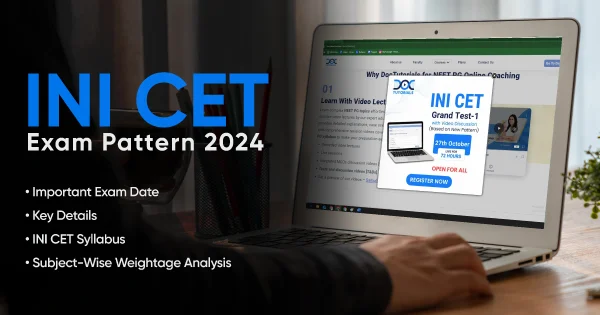
INI CET Exam Pattern 2025: A Complete Guide with Subject-Wise Weightage
The Institute of National Importance Combined Entrance Test (INI CET) is your key to entering some of the most prestigious…
-
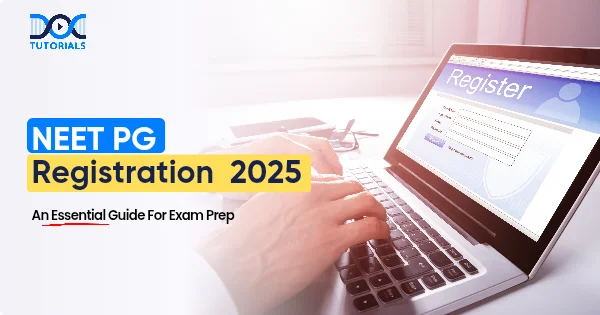
NEET PG Registration 2025: An Essential Guide For Exam Prep
The NEET PG registration, which is conducted online, is a crucial step in the exam process. Filling out the NEET…
-
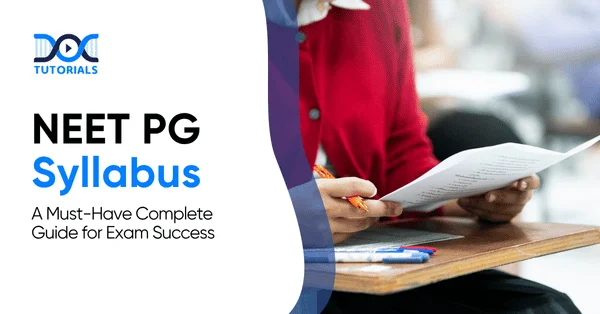
NEET PG Syllabus 2026: A Must-Have Complete Guide for Exam Success
The NEET PG Syllabus acts as one of the foundation stones for aspiring postgraduate medical students like you who are…

